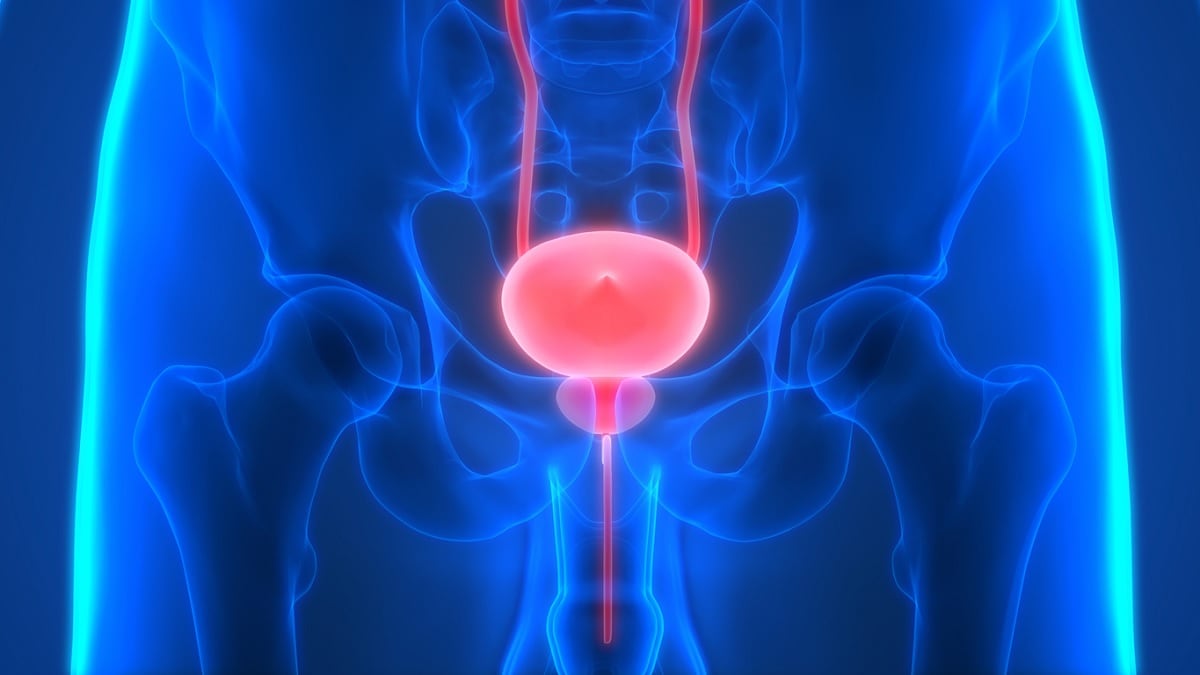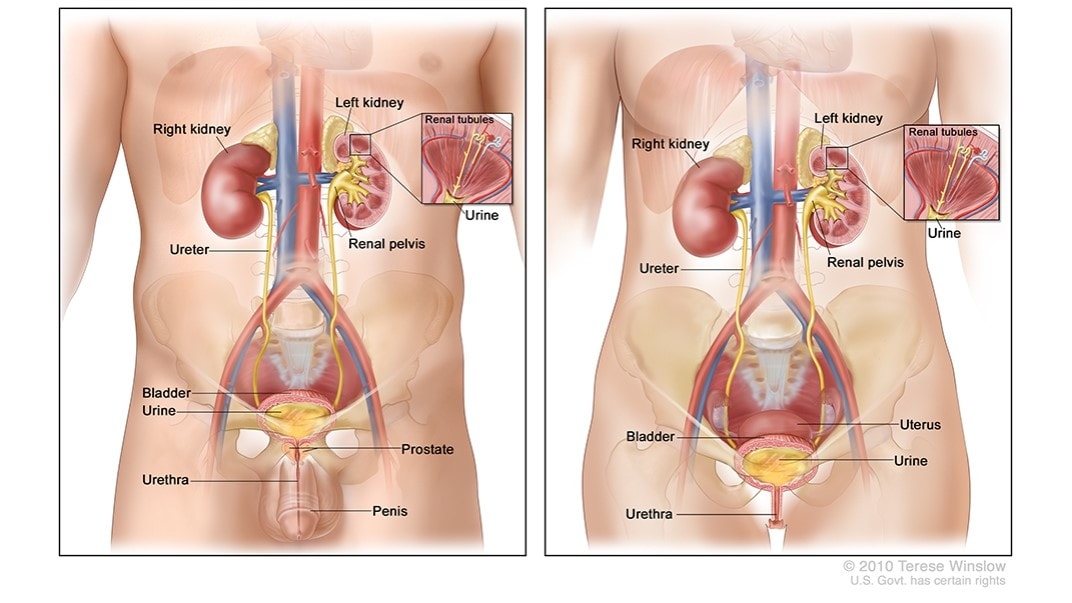Key points
- To lower the risk of bladder cancer, don’t smoke and be especially careful around certain kinds of chemicals.
- Blood in the urine is the most common symptom.

Overview
Cancer is a disease in which cells in the body grow out of control. When cancer starts in the bladder, it is called bladder cancer.
The bladder (sometimes called the urinary bladder) is a balloon-shaped organ in your lower abdomen, near the pelvis. It stores urine from the kidneys until it is passed out of the body.

Illustration © 2010 Terese Winslow LLC. US government has certain rights. Used with permission. Contact artist at www.teresewinslow.com for licensing.
Symptoms
- Blood in the urine. This is the most common symptom.
- Having to urinate often.
- Pain while urinating.
- Back pain.
- Pelvic pain.
These symptoms can also come from other conditions. If you have any of these symptoms, talk to your doctor, which is the only way to find out what may be causing them.
Risk factors
Smoking is the most important risk factor for bladder cancer. Other risk factors include:
- Having a family history of bladder cancer.
- Having certain gene mutations (unusual changes made when your body's cells are dividing).
- Being exposed to too much of certain workplace chemicals used in processing paint, dye, metal, and petroleum products.
- Taking some kinds of chemotherapy drugs.
- Drinking well water contaminated with arsenic.
- Taking the Chinese herb Aristolochia fangchi.
- Having chronic urinary tract infections (including those caused by Schistosoma haematobium).
Reducing risk
To lower the risk of bladder cancer, don’t smoke (and if you do, quit) and be especially careful around certain kinds of chemicals.
Statistics
The Data Visualizations tool makes it easy for anyone to explore and use the latest official federal government cancer data from United States Cancer Statistics. It includes the latest cancer data covering the US population.
Resources
- Bladder Cancer (National Cancer Institute)
- Tobacco and Cancer (CDC)
- Cancer-Causing Substances in the Environment (National Cancer Institute)
